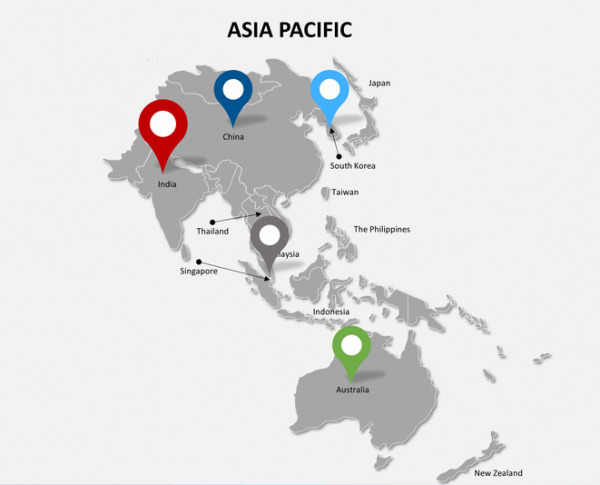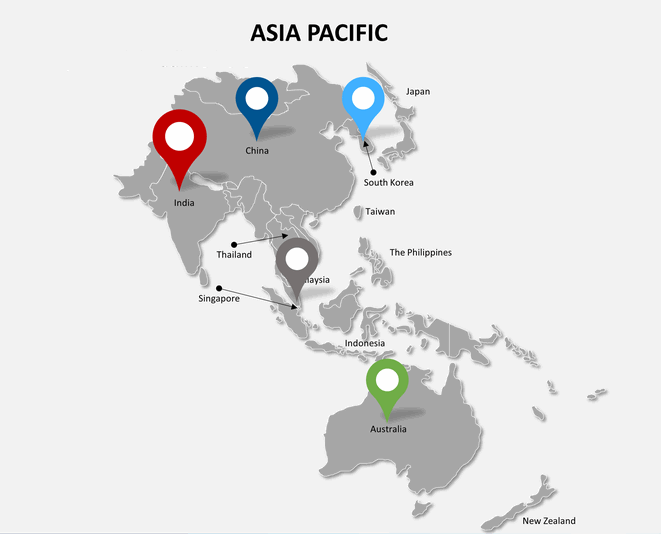
This article opens a series of surveys on current state of online retail markets worldwide as seen by independent industry reviewers. These reviews can prove beneficial to everyone who is considering doing business online.
Asia-Pacific: general outlook
According to researchandmarkets.com, a global market research store, Asia-Pacific region is currently considered to be responsible for
the biggest share of all the retail transactions made all over the world.
Three of the
seven countries having the largest volume of B2C e-commerce sales globally are located in the region. The biggest B2C e-commerce market here belongs to
China – the country nowadays is competing with the USA for the status of the global online retail leader.
The Asia-Pacific region is expected to gain an even bigger share of worldwide B2C e-commerce market in the following five years. This growth will mostly be due to the accelerated development of the region’s emerging markets such as China and India. By the way, India and Southeast Asia countries are forecasted to witness
double-digit increase of B2C e-commerce sales volume in the following years up until 2019.
It is also worth mentioning that India, as well as China and Thailand, is characterized with the
highest percentage of mobile shoppers in the region. On the contrary, Japan, New Zealand and Australia are local leaders in terms of Internet penetration. Australia, moreover, leads the way towards promoting
cross-border online shopping in the region. Cross-border trade here is viewed as an exceptionally important trend – according to analysts’ predictions, by the year 2020 the region will account for roughly the
half of all the cross-border e-commerce deals made across the world.
It is curious to know that, even though international players such as Amazon, Wal-Mart, and eBay, have a significant market share in the region, the indisputable leaders of the industry are Chinese players –
Alibaba Group and JD.com.
Asia-Pacific: consumers’ peculiarities
As it can be seen from the statistics gathered by ystats.com, the global e-commerce reports provider, almost a half of online shoppers in the region are ready to include more items in a single purchase in order for the package to become eligible for
free shipping option. Along with that, Japanese customers turned out to be willing to wait longer in order to get free delivery, and more than 65% of web users from Singapore admitted that free shipping is
the critical factor that heavily influences their shopping decisions.
Curiously enough, Chinese online shoppers put the significance of delivery speed above all the other factors, even over delivery costs. Similarly, Indian customers constitute the largest part of worldwide online shoppers who are ready to
pay extra for faster shipping. Therefore, retailers of the region are increasingly focusing on providing more convenient and fast delivery options.
Asia-Pacific: online payment preferences
Apart from other reasons, this market has a high potential for doing business online due to the fact that customers here have a taste for innovation. They readily adopt
new payment methods that appear and evolve along with online retail advancements. Curiously enough, consumers here are more likely to use
smartphone wallets and
mobile money than customers from more developed countries.
Nevertheless, the most popular payment options vary greatly in different countries, for example:
- Credit cards for Japan and South Korea;
- Third-party online payment systems for China;
- Cash on delivery for India;
- Banking methods and cash on delivery for Indonesia;
- Money transfer at a bank counter for Thailand.

 This article opens a series of surveys on current state of online retail markets worldwide as seen by independent industry reviewers. These reviews can prove beneficial to everyone who is considering doing business online.
This article opens a series of surveys on current state of online retail markets worldwide as seen by independent industry reviewers. These reviews can prove beneficial to everyone who is considering doing business online.

